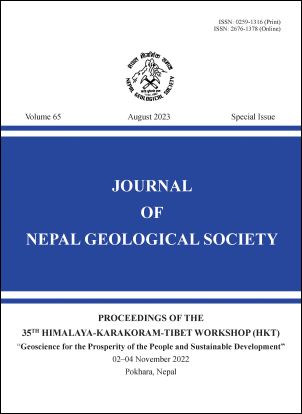Methods applied for the stability assessment in rock engineering
DOI:
https://doi.org/10.3126/jngs.v65i01.57741Keywords:
Rock mass, rock stress, rock slope, tunnels, caverns, stability assessment methodsAbstract
The rock mass is exposed to stress changes after the excavation is made for the construction of infrastructures such as roads, railways, hydropower and irrigation projects. The expansion of the roads requires slope cuts which cause the natural discontinuities to daylight leading to the rock slope failure of different types and magnitudes. The construction of tunnels and underground caverns for different infrastructure projects will pass through rock mass with varying rock cover leading to different stability challenges. The changes in in-situ stress condition therefore will have direct impact on the stability of infrastructure projects. This key-note lecture will highlight the methods used to make a stability assessment of rock slopes and underground excavations. The focus will be given on the most important aspect of design and stability assessment covering rock slope failures, block falls in tunnels and issues associated to in-situ stress conditions on elastic brittle and elastic plastic rock material. Tunnels and underground caverns located in shallow overburden are subjected to de-stresses conditions causing block falls. On the other hand, tunnels and caverns located deep into the rock mass (high rock cover) are subject to instabilities caused by induced rock stresses. If the rock mass is relatively unjointed and massive, the instability is associated to brittle failure called rock spalling/ rock bursting. On the other hand, if the rock mass is weak and deformable, the instability is associated with plastic deformation called squeezing. Therefore, stability assessment in rock engineering is a challenging task and needs deep knowledge on the behavior of rock mass and is of the challenging issue for engineering geologists and rock engineers.
Downloads
Downloads
Published
How to Cite
Issue
Section
License
© Nepal Geological Society




